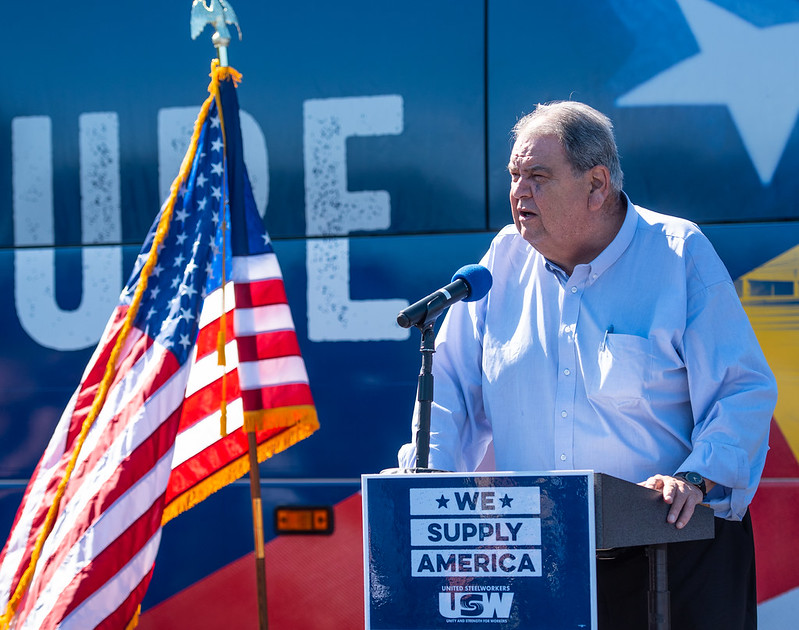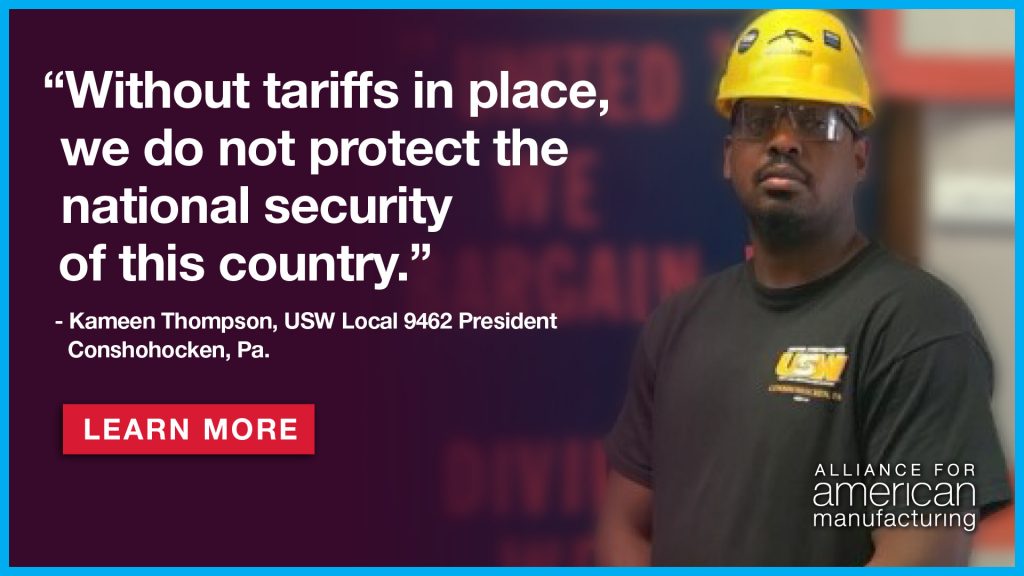
It’s critical for the United States to maintain “effective trade measures to prevent new surges of steel imports fueled by global overcapacity” — including from our allies.
The United Steelworkers (USW), American Iron and Steel Institute (AISI) and Steel Manufacturers Association (SMA) sent a letter to President Biden on Friday urging him to keep trade measures in place to prevent a flood of steel imports that could threaten hundreds of thousands of jobs and the stability of a critical American industry.
And here’s where things get interesting: The signees point to the European Union as a key contributor to the global problem of steel overcapacity.

Yeah, I know! You were probably expecting me to say there’s worry about China’s steel overcapacity, right?!?
While China is indeed the chief contributor to the global steel overcapacity crisis — and could probably step up to help resolve it, as we outlined in full detail on the blog last week — other countries also are contributing to the problem, including many of America’s allies in the European Union.
But instead of fixing the problem at hand, the E.U. is also actively pushing the United States to drop Section 232 tariffs on its steel exports. And they’ve gotten the Biden administration to the table.
In May, the U.S. and E.U. issued a joint statement announcing diplomatic discussions to “address global steel and aluminum excess capacity” and “partner to promote high standards, address shared concerns, and hold countries like China that support trade-distorting policies to account. ”
Lifting the tariffs on E.U. imports now, however, could seriously jeopardize the future of the American steel industry at a critical time. The global steel overcapacity crisis led to mass layoffs and plant closures at steel facilities across the country, but Section 232 trade action allowed the industry to stabilize, creating at least 3,200 new direct jobs and $15.7 billion in investments in new or upgraded facilities.
The Economic Policy Institute cautioned in March that lifting Section 232 without addressing the fundamental problem of overcapacity “would put the U.S. steel industry at risk, imperiling new investments and hundreds of thousands of good jobs in steelmaking and in other indirect and induced jobs supported by steelmaking activity.”
And make no mistake: The E.U. is contributing to that fundamental problem.
As the letter notes, the firm McKinsey & Company reported earlier this year that the European steel industry needs to reduce its excess steel capacity by 25-30 million metric tons to achieve a sustainable capacity utilization rate. But certain E.U. governments have instead “announced aggressive new subsidy programs for the steel industries, which will distort competition and exacerbate the ongoing excess capacity crisis.”
On top of that, some steel imports from the E.U. “contain steel that has been melted and poured in a number of non-EU countries. For example, millions of tons of semi-finished steel from Russia, Ukraine, China and elsewhere enter the EU every year to be rolled, finished, and exported – all too often to the U.S. market,” the signees write.
In fact, there already are “22 existing antidumping and countervailing duty orders in place on EU steel products to address the unfair competition that has often plagued our relationship,” the signees tell Biden.
“Accordingly, while we support efforts to discuss with the EU how to work together to address the steel overcapacity crisis, the administration must at the same time maintain effective trade measures to prevent another import surge from the EU that would destroy good paying jobs, undermine our industry, and increase the carbon footprint of
U.S. steel consumption,” they continue. “These measures must be implemented on a product- and country-specific basis and ensure that stringent, effective tariffs will be automatically imposed if steel imports from the EU surge above a non-injurious level. This is exactly what the EU has done with regard to its own market by extending for another three years its steel safeguard measure, which imposes a tariff rate quota on steel imports from all around the world.”
While the Biden administration will focus on diplomatic efforts over the next few months, it’s important to keep in mind that there’s a bit of politics at play here, too. AAM President Scott Paul recently pointed out to Politico that many steel facilities are located in key swing states like Ohio and Pennsylvania, and “simply lifting steel tariffs without any solution in place, particularly beyond the dialogue, could well mean layoffs and plant closures.”
That almost certainly would lead to political consequences. Kameen Thompson, president of USW Local 9462 in Pennsylvania, put it succinctly: “If [Biden] just takes them off and lets them just go cowboy on us and just roll in here, then that’s not a good look. And I’m pretty sure my members, and the top members in USW, would not be happy with that.”
The Biden administration is going to face a lot of pressure from E.U. officials to lift Section 232 tariffs. And the United States will need to work with its allies in the European Union to take on China’s government, not only on steel overcapacity but other key trade issues — plus critical national and economic security matters. So it makes sense that Team Biden wants to resolve this issue.
But as the USW, AISI and SMA point out, it’s also vital that action be taken to ensure the stability and long-term survival of our domestic steel industry, too.
“There are many ways in which the U.S. and the EU can work together to address this common challenge, including through the establishment of stronger international trade rules against subsidies and other forms of market-distorting
government intervention,” they write. “But these forms of cooperation cannot substitute for maintaining effective trade measures against import surges, including from the EU, that jeopardize our production, national security, economic health, critical infrastructure and jobs.”
Click here to read the full letter.

